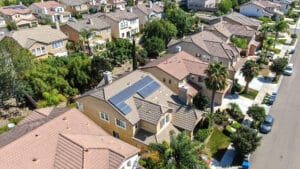If you’ve ever opened your electric bill and wondered why the cost keeps creeping higher—even when your usage looks the same—you’re not imagining things. Utilities across the country are restructuring how they charge customers, and homeowners are feeling the effects.
At WattLab, we break down what’s really driving those increases, how utility rate plans work, and how solar plus battery storage can protect your wallet.
Why Electricity Costs Keep Rising
On the surface, electricity billing should be simple: you use power, and you pay for it. But that’s not the reality today.
Utilities are raising fees, restructuring plans, and facing enormous demand growth. A big driver of this demand is the rapid expansion of artificial intelligence and the data centers powering it. Some new centers are projected to consume up to 10 gigawatts each—more than double the size of Arizona’s Palo Verde Nuclear Plant, which tops out at 3.8 GW.
As demand grows and supply struggles to keep pace, the price of electricity inevitably rises.
From Simple Rates to Complex Plans
Time-of-Use Billing
Many utilities now charge based on when you use electricity, not just how much. These time-of-use (TOU) plans make late afternoon and evening—the hours when families cook dinner, run AC, and plug in devices—the most expensive time of day.
That means even if your total usage hasn’t changed, using more power at the wrong time can dramatically increase your bill.
Net Billing for Solar Customers
Solar customers have also seen big changes. A decade ago, most utilities offered full retail credit for energy exported back to the grid. Today, many have shifted to net billing, where credits are worth significantly less.
The bottom line: solar systems need to be designed not only for production but also for the rules of your local utility.
Arizona: APS and SRP’s Unique Challenges
APS (Arizona Public Service)
APS customers are almost always placed on time-of-use plans, with the steepest rates between 4 PM and 7 PM—just as the sun is setting. Without storage, that means buying high-cost peak electricity from the grid each evening.
Pairing solar with a battery changes the equation. You can:
Store excess daytime solar power.
Charge batteries with low-cost off-peak energy.
Discharge energy in the evening to avoid paying premium rates.
SRP (Salt River Project)
SRP takes a different approach by applying demand charges—fees based on how much power you pull from the grid at once during peak hours. Even if your monthly energy use is modest, one big spike can raise your bill.
Batteries help smooth out these peaks by reducing or eliminating demand charges. That makes them one of the most effective tools for managing SRP’s unique rate structure.
The Role of Virtual Power Plants
Both APS and SRP are also exploring virtual power plant (VPP) programs. With a VPP, homeowners can sell stored energy back to the grid during high-demand events, often earning more than standard solar export rates.
Texas: Shopping for the Best Solar Plan
Texas operates on a deregulated grid, giving homeowners the ability to choose from dozens of retail energy providers. Some offer strong solar buyback programs, occasionally even at retail rates during certain hours.
The best approach depends on two key factors:
How much solar your roof can support.
What percentage of your power needs to come from the grid.
A well-designed solar system in Texas often aims to match your annual usage as closely as possible. Even if you can’t cover 100% of your energy needs with solar, you can still reduce costs significantly. And with batteries, you add resilience against outages—a priority for many Texans after recent grid failures.
Key Takeaway
Solar is no longer a one-size-fits-all solution. Your potential savings aren’t just about how much sunlight your roof gets—they depend on how well your system is tailored to your utility’s specific rate structure.
In Arizona, batteries are critical for handling peak pricing and demand charges.
In Texas, the right system design paired with the right retail provider unlocks the best savings.
Everywhere, solar plus storage delivers both long-term cost protection and peace of mind.



